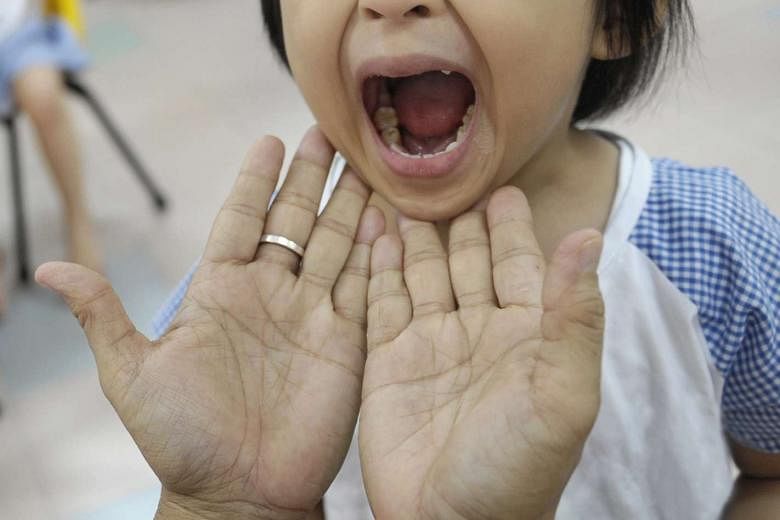Hand, foot and mouth disease (HFMD) is an infection caused by a group of viruses called enteroviruses, commonly the coxsackievirus A16 and the more serious enterovirus 71.
It is commonly seen in Singapore the whole year round, mainly affecting children.
The condition usually affects kids below 10 years old, said Dr Chan Poh Chong, head and senior consultant, division of general ambulatory paediatrics and adolescent medicine, National University Hospital.
The spread is most prevalent in places where children are in close proximity and exchange of fluids, like mucous and saliva, is commonplace, said Dr Chan.
-
How to prevent HFMD
-
•Practise proper hygiene such as hand washing after going to the toilet, and covering your mouth and nose when coughing or sneezing.
•Do adequate disinfection of articles such as toys, eating utensils and towels contaminated by the droplets, saliva or stools of those who are infected.
• Avoid places like childcare centres or playgrounds where an outbreak has occurred.
•Avoid kissing, hugging, playing or sharing eating utensils or cups with children who may have HFMD.
Infants usually get infected by older siblings with the disease. Adults can also get HFMD but their symptoms are usually less severe.
Symptoms usually start with a mild fever, poor appetite and lethargy, and sometimes a sore throat, said Dr Chan.
One or two days after the fever begins, sores develop in the mouth over the tongue, the insides of the mouth and the back of the throat, he added.
Rashes of red spots and blisters may then occur on the palms and soles, and sometimes on the buttocks of younger children.
Children will show signs of the disease three to five days after being infected, said Dr Chan.
He gives tips on prevention and what to do when a child has HFMD.
Ng Wan Ching
What to do if a child is infected
•Have the child drink enough fluids to prevent dehydration.
•Allow the child to take what he likes, even cold drinks, ice cream or popsicles.
•Apply ulcer gel or use mouth spray to relieve pain from mouth sores.
•Give painkillers.
•Use saltwater mouth rinses for older children.
•Give the child small feeds with soupy/soft diets to minimise pain due to mouth ulcers.
•Apply calamine lotion on the rashes if they become itchy.
•Avoid using mittens as they may irritate the blisters or rashes on the hands or feet.
•Stay in air-conditioned places to avoid sweating and further irritation to the rashes.
•Have the child stay away from school for one week after the rash appears to prevent the disease from spreading further.

